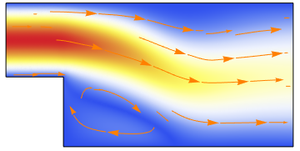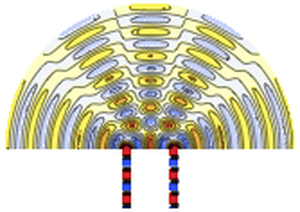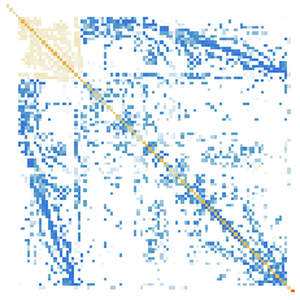Learn Acoustics Modeling with PDEs
Learn about modeling acoustics with partial differential equations with the monographs about acoustics in the time domain and in the frequency domain. The monographs focus on explaining how to make use of various partial differential equations, boundary conditions and sources typically encountered in acoustics in the Wolfram Language.
The acoustics monographs present many examples. Here, a diffraction pattern generated by two intersecting acoustics waves is shown.
Specify a region.
Visualize the domain.
On the bottom of both wave channels, a radiation boundary condition is used to model the incoming sound wave.
On the boundary of the semi-disk, an absorbing boundary condition is specified to model the outgoing wave.
On the remaining walls of wave channels, default sound hard boundary conditions are implicitly used.
Take air as the sound medium and extract the relevant data from ThermodynamicData.
Specify the wavelength of sound  and calculate the corresponding frequency
and calculate the corresponding frequency  .
.
The PDE model for the sound pressure field is given by
Solve the PDE for the sound pressure.
Visualize the sound propagation and the diffraction pattern.
Animate the change in pressure.


























